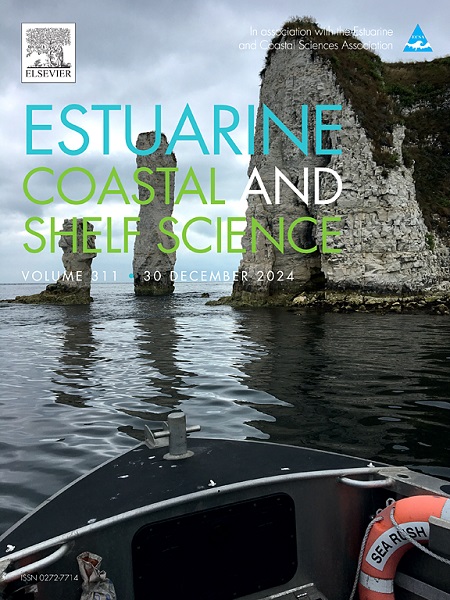海洋变暖、海洋热浪和浮游植物生物量:北亚得里亚海的长期趋势
IF 2.6
3区 地球科学
Q1 MARINE & FRESHWATER BIOLOGY
引用次数: 0
摘要
本文研究了北亚得里亚海(NAS)海表温度(SST)、海洋热浪(MHWs)和浮游植物生物量(叶绿素-a)的变化趋势,以及海洋变暖对叶绿素-a的潜在影响。在不受季节影响的情况下,计算出的反季节化趋势显示,几乎整个南海的海表温度普遍升高,叶绿素-a浓度下降。东部沿海和近海海温的增加最为明显,而西部沿海,特别是波河三角洲附近,chl-a的减少最为明显。从季节来看,这些趋势通常在春季和夏季更为明显。在整个流域也观察到海温平均值和趋势的空间和季节变化。随着时间的推移,chl-a对海温异常的不同响应被强调,在随后的时间(一个月后),负相关在整个NAS中蔓延,而在富营养化泻湖地区则呈正相关。利用不同的案例研究和聚类分析来评估海洋变暖对浮游植物生物量的影响,海洋变暖也与高强度海洋变暖有关。这种关系因背景营养条件的不同而不同:在低营养区,海洋热浪和极端高温导致叶绿素-a浓度降低,而在富营养区,如西海岸和泻湖,同样的条件导致浮游植物生物量增加。结果表明,海温升高和海温升高是影响南海浮游植物群落的主要因素。本文章由计算机程序翻译,如有差异,请以英文原文为准。
Ocean warming, marine heatwaves and phytoplankton biomass: long-term trends in the Northern Adriatic Sea
In the present study, we investigated the trends of Sea Surface Temperature (SST), marine heatwaves (MHWs) and phytoplankton biomass, in terms of chlorophyll-a (chl-a), in the Northern Adriatic Sea (NAS), and the potential effects of ocean warming onto chl-a. Deseasonalized trends, calculated to assess the general tendencies without the effect of seasonality, showed a general increase of SST, and a decrease of chlorophyll-a concentration in almost the entire NAS. The strongest increase in SST was found along the eastern coast and in offshore areas, whereas the most pronounced decrease in chl-a was observed along the western coast, especially near the Po River delta. Seasonally, these trends were generally more marked in spring and summer. Spatial and seasonal variability in MHWs mean values and trends were also observed across the basin. A different response of chl-a to SST anomalies was highlighted over time, with negative correlations spreading throughout the NAS at subsequent time (one month later), together with positive correlations in eutrophic lagoonal areas. Different case studies and cluster analysis were used to assess the effects of ocean warming, also related to MHWs, on phytoplankton biomass. The relationships varied based on the background trophic conditions: in oligotrophic regions, marine heatwaves and extreme heat conditions led to reduced chlorophyll-a concentrations, while the same conditions in eutrophic areas, such as the western coast and lagoons, caused an increase in phytoplankton biomass. Our results indicated that MHWs and SST increases, are among the factors that are affecting the phytoplankton communities of the NAS.
求助全文
通过发布文献求助,成功后即可免费获取论文全文。
去求助
来源期刊
CiteScore
5.60
自引率
7.10%
发文量
374
审稿时长
9 months
期刊介绍:
Estuarine, Coastal and Shelf Science is an international multidisciplinary journal devoted to the analysis of saline water phenomena ranging from the outer edge of the continental shelf to the upper limits of the tidal zone. The journal provides a unique forum, unifying the multidisciplinary approaches to the study of the oceanography of estuaries, coastal zones, and continental shelf seas. It features original research papers, review papers and short communications treating such disciplines as zoology, botany, geology, sedimentology, physical oceanography.

 求助内容:
求助内容: 应助结果提醒方式:
应助结果提醒方式:


